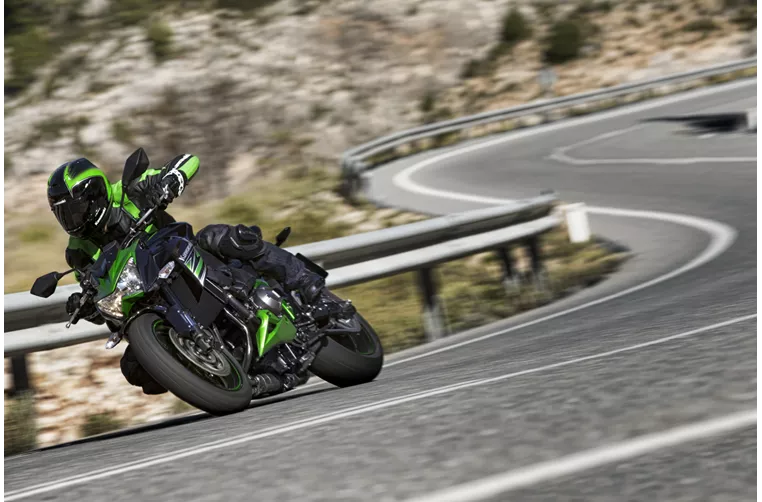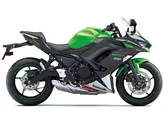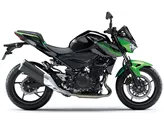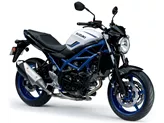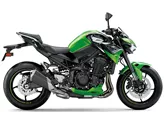Kawasaki Z650 2020 vs. Kawasaki Z 800 2013

Kawasaki Z650 2020

Kawasaki Z 800 2013
Vue d’ensemble - Kawasaki Z650 2020 vs Kawasaki Z 800 2013
The Kawasaki Z650 2020 and the Kawasaki Z800 2013 are both naked bikes from Kawasaki, but they have some notable differences in terms of technical specifications and strengths.
Starting with the engine and drive train, the Kawasaki Z650 2020 is equipped with a 2-cylinder in-line engine that delivers 68.2 HP of power and 65.7 Nm of torque. On the other hand, the Kawasaki Z800 2013 features a 4-cylinder in-line engine that produces a more powerful 113 HP of power and 83 Nm of torque. This makes the Z800 more suitable for riders who prefer confident acceleration and a more powerful ride.
In terms of cooling, both bikes have liquid-cooled engines, ensuring optimal performance even during long rides. However, the Z650 has a smaller displacement of 649 ccm compared to the Z800's 806 ccm, which means that the Z800 may offer more power and torque.
When it comes to suspension, the Z650 2020 is equipped with a telescopic fork front suspension and preload adjustment for the rear suspension. On the other hand, the Z800 2013 features an upside-down telescopic fork front suspension and rebound adjustment for the rear suspension. This difference in suspension setup may result in a different riding experience, with the Z800 potentially offering a more comfortable and controlled ride.
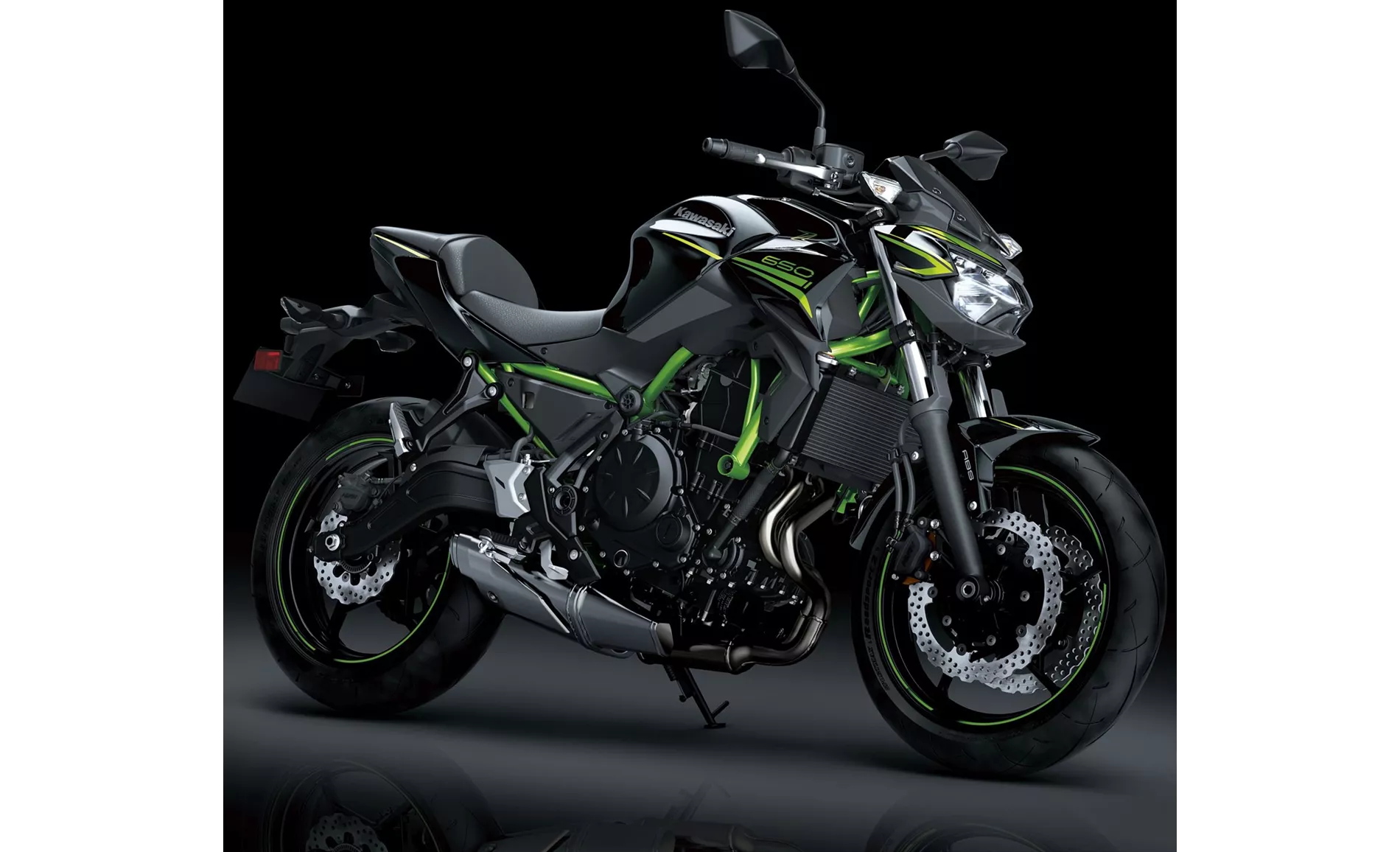
Kawasaki Z650 2020
Both bikes have a steel frame, providing stability and durability on the road. However, the Z650 2020 has a tubular frame type, while the Z800 2013 has a double cradle frame type. This variation in frame design may impact the overall handling and maneuverability of the bikes.
In terms of braking, both bikes feature double disk brakes at the front with petal technology. However, the Z650 2020 has double-piston front brake pistons, while the Z800 2013 has four-piston front brake pistons. This difference in piston count may result in a variation in braking performance, with the Z800 potentially offering more stopping power.
When considering dimensions and weights, the Z650 2020 has a front tire width of 120 mm, a rear tire width of 160 mm, and a wheelbase of 1410 mm. The seat height is 790 mm, and the kerb weight is 185 kg. The fuel tank capacity is 15 liters. On the other hand, the Z800 2013 has a front tire width of 120 mm, a rear tire width of 180 mm, and a wheelbase of 1445 mm. The seat height is 834 mm, and the kerb weight is 229 kg. The fuel tank capacity is 17 liters. These differences in dimensions and weights may result in variations in handling and stability.
Moving on to strengths, the Kawasaki Z650 2020 has a powerful two-cylinder engine, aggressive intake noise, compact dimensions, and a low seat height, making it suitable for riders who prefer a sporty and agile ride. It also features a stable chassis and a TFT display with connectivity, providing a modern and convenient riding experience. Additionally, the Z650 2020 has a grown-up look, appealing to riders who prefer a more mature and sophisticated design.

Kawasaki Z 800 2013
On the other hand, the Kawasaki Z800 2013 has an eye-catching, chunky look that stands out on the road. It offers confident acceleration and has a relaxed geometry, making it suitable for riders who prefer a more laid-back riding position. The Z800 also boasts powerful brakes, ensuring reliable stopping power in various riding conditions.
However, both bikes have their weaknesses. The Z650 2020 has a front brake pressure point that may not be as precise as desired. It may also be uncomfortable for tall riders due to its compact dimensions and low seat height. Additionally, the Rideology App, which offers connectivity features, may not be as sophisticated as expected.
On the other hand, the Z800 2013 has limited freedom of movement for the legs, which may affect rider comfort during long rides.
In conclusion, the Kawasaki Z650 2020 and the Kawasaki Z800 2013 are both impressive naked bikes from Kawasaki, each with its own set of strengths and weaknesses. The Z650 offers a powerful two-cylinder engine, compact dimensions, and a stable chassis, while the Z800 boasts a more powerful engine, confident acceleration, and a unique chunky look. Riders should consider their preferences and priorities to choose the bike that best suits their riding style.
Caractéristiques techniques Kawasaki Z650 2020 par rapport à Kawasaki Z 800 2013
Avantages et inconvénients en comparaison
Avantages et inconvénients en comparaison
Kawasaki Z650 2020

La nouvelle Z650 de Kawasaki est tout simplement un paquet complet. Les composants techniques ne sont peut-être pas à la hauteur, mais combinés entre eux, ils donnent une moto agréablement neutre, avec laquelle tout le monde aura beaucoup de plaisir. Pas de bizarreries - simplement une moto naked qui fonctionne vraiment bien sur les routes de campagne sinueuses. L'écran TFT, que nous ne trouvons pas encore chez la concurrence, ainsi que l'aspect adulte, qui s'inspire fortement des modèles Z plus grands, sont bien sûr des atouts supplémentaires. Seul le point de pression du frein avant aurait pu être plus clairement défini - mais dans cette catégorie de prix, on ne peut pas tout avoir.
Kawasaki Z 800 2013

Dans l'ensemble, la Z800 a livré une performance sensationnelle. Compte tenu du fait que rien n'a été modifié ou optimisé sur le véhicule, à l'exception du pot d'échappement Remus, le résultat final est superbe.
Comparaison des prix Prix moyen du marché Kawasaki Z650 vs Kawasaki Z 800
There are a few key differences between a Kawasaki Z650 2020 and a Kawasaki Z 800 2013. In terms of price, the actual average price of a Kawasaki Z 800 2013 is about 3% higher. Compared to Kawasaki Z 800 2013 there are more Kawasaki Z650 2020 bikes available on the 1000PS.de Marketplace, specifically 21 compared to 7. It takes less time to sell a Kawasaki Z 800 with 56 days compared to 80 days for the Kawasaki Z650. Since model year 2017 1000PS.de editors have written 31 reviews for the Kawasaki Z650 and 11 reviews for the Kawasaki Z 800 since model year 2013. The first review for the Kawasaki Z650 was published on 11/8/2016 and now has more than 25,000 views. This compares to more than 8,100 views for the first review on Kawasaki Z 800 published on 9/6/2012.

